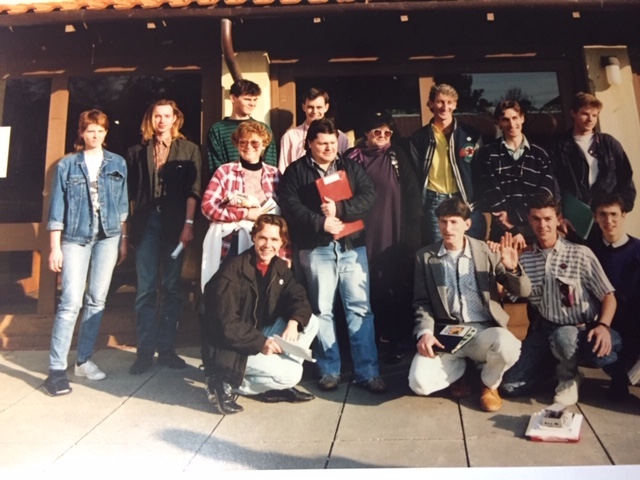Author note on the feature image: the inaugural SUSWA (Stonewall Union of Students of WA) AGM held in the Sue Boyd Room of the UWA Guild on 29 July 1990. It was the ‘rebirth’ of gay student activism in WA and one of the forces that led to the Pride Parades – the first one being in October 1990.
Most people know of Eddie Mabo, Nelson Mandela and Martin Luther King, and their respective campaigns for land rights and racial equality. Similarly, we know about the major milestones of feminism; the struggles for women’s suffrage and equal pay.
But when it comes to the gay rights movement, things are not so clear. Most of us know little about any gay rights pioneers, The term ‘gay liberation’ is familiar, but roughly when and how did it all come about?
Nowadays, it can be difficult for younger members of the gay community to imagine how homophobic society once was and how invisible gay people were many decades ago. Back in these bad old days, gay men were classed as criminals whenever they engaged in consensual sex, and as mentally ill regardless of their behaviour.
During the last five decades Australia, like many other countries, has seen major strides in gay rights starting with such reforms as decriminalisation, equal opportunity protection, adoption rights and most recently with marriage equality in 2017. Some of these changes were overtly political, such as specific law reforms, whilst others were more subtle, such as changes in terminology. For example, it was around the period of the late 1960s that the term ‘gay’ came to be used more universally for ‘homosexual,’ replacing other, more derogatory terms. Most of these reforms were hard won, and some took decades to achieve. This entire process of modern gay liberation can be traced to a specific event; a violent protest at a gay tavern.
This year marks fifty years since that event, the birth of modern gay liberation, and the precursor of the contemporary LGBTQIA+ rights movement. From humble beginnings and a few brave individuals, this movement has grown to significantly change modern society on a global scale.
The Stonewall Inn was a gay bar in New York’s Greenwich Village. The clientele and supporters rioted on 28 June 1969 against constant police harassment, which included impromptu raids and the summary arrest of patrons. Significantly, the clientele of this bar regularly included men and women, drag queens and transgender people, as well as an even mix of black, white and Hispanic individuals. Thus, the diversity celebrated in later pride parades was present even at this early stage of modern gay liberation.
The Stonewall riots extended over days, eventually morphing into a major reform movement. While there had been similar demonstrations previously, this one had national and even international ramifications – the ‘shot heard around the world’ (for example, less than eight years later, a branch of gay liberation was established in Perth by university students, and Sydney’s first gay Mardi Gras took place in 1978). The Stonewall riots brought gay rights clearly into the public arena; they provided the activist template that would be reproduced many times during the subsequent decades, in many countries. Further, this form of gay liberation was a qualitative shift from its predecessors. Earlier movements had been focused on education and assimilating gays into society – with Stonewall, gay liberation became more confronting, with a greater focus on changing society to accommodate a marginalised group. Eventually, many social constructs, from words and definitions to laws and gender roles, would come to be questioned. It was a seismic shift that led to gay activists adopting a more radical agenda, bringing gay politics into the mainstream.
This more radical, more vocal agenda was not unique to gay liberation – it did not occur in a social or political vacuum. The counterculture of the 1960s spawned many sociopolitical movements questioning the status quo; apart from the anti-Vietnam War movement, the most prominent were second-wave feminism and the civil rights movements led by African Americans. These cultural shifts highlighted that women and certain groups of men (including black and gay men) did not possess the same rights as the majority of the population. In this context, it is not surprising that the gay liberation movement arose when and where it did.
Thanks to it, we have a much more tolerant and inclusive society.
Words by Andrew Douglas

